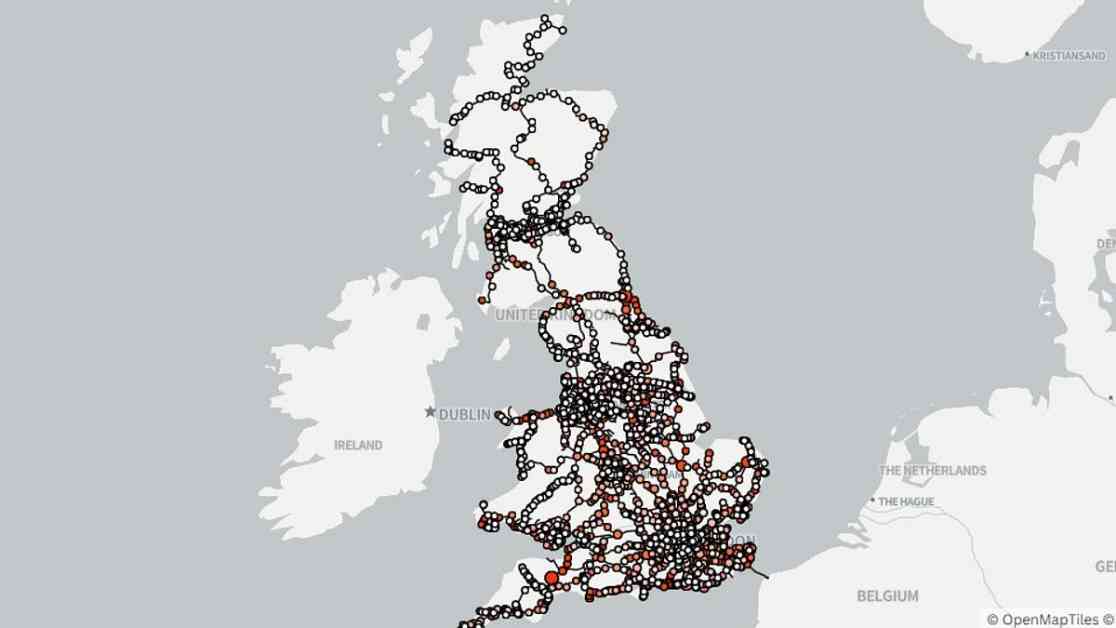Britain’s most crime-infested train stations can today be named and shamed – and they probably aren’t where you think. A recent analysis by MailOnline found a remote station nestled in the Welsh countryside topping the list. Johnston, an unstaffed stop in the village of the same name in Pembrokeshire, saw 10 crimes in 2024, with four of them classified as violent offenses. Despite the low number of crimes, Johnston recorded the highest rate in the UK due to its minimal foot traffic, with just 7,000 passengers utilizing the station that year, equivalent to 19 daily travelers.
Crime rates across the UK’s transport network have surged to a record high, as reported by the British Transport Police (BTP). Nearly 80,000 offenses were documented in 2023/24, with violent crimes and sex offenses reaching all-time highs, doubling over the past decade. In an alarming incident at Barnham Station in West Sussex last Easter, a gang of teenage girls wreaked havoc by attacking train staff, passengers, and police in an alcohol-fueled frenzy. Despite the violent outburst, the girls, as young as 13, avoided prison time for their affray and assaults on multiple individuals.
### The Most Dangerous Stations in the UK
London St Pancras International topped the list for the most crimes recorded, with 1,616 incidents in a year. However, considering its annual passenger count of 38.5 million, the crime rate appears less alarming. Following Johnston, Redbridge station in Southampton emerged as the second most dangerous, with 1,180 crimes per million passengers. The majority of offenses at Redbridge were vehicle-related, likely involving break-ins at the station’s small car park. Small stations like Tiverton Parkway in mid-Devon also featured prominently on the list, reporting 484 crimes against its 581,000 passengers in 2024.
### Personal Tragedies and Impact
Tragically, incidents like the murder of 19-year-old Stephanie Marie at Crawley Station and the attack on 87-year-old Dorothy Chiles at Birmingham New Street Station underscore the devastating impact of crime on individuals and communities. Stephanie Marie’s family mourned the loss of their beloved daughter, while Dorothy Chiles succumbed to her injuries weeks after the attack. These harrowing events serve as poignant reminders of the real human toll of crime in public spaces.
As the BTP acknowledges the rise in reported crimes, they emphasize the importance of contextualizing these figures. While the overall crime rate may have increased, the likelihood of being a victim of crime on the railway remains low. The BTP credits the uptick in reports to increased confidence in reporting incidents like sexual harassment. Proactive operations and heightened stop and search efforts aim to deter criminal activities and ensure passenger safety. It’s crucial not to sensationalize crime rate data, as stations with low foot traffic may exhibit seemingly high crime rates due to minimal recorded incidents.
The challenges of tackling crime in the UK’s train stations highlight the need for continued vigilance and community engagement to ensure the safety and security of all passengers and staff. While statistics provide valuable insights, it is the human stories behind these numbers that remind us of the profound impact of criminal activities on individuals and families. As we navigate evolving safety concerns, a collaborative approach involving law enforcement, transport authorities, and the public is essential to create a secure environment for all travelers.









